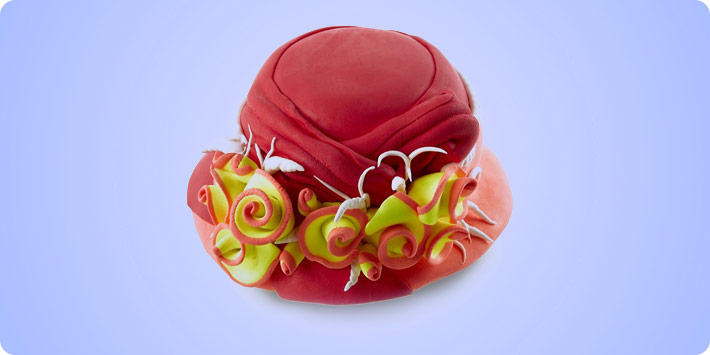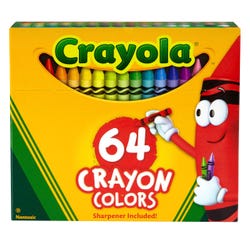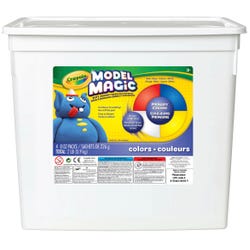Beautiful Bonnet

Description
Color mixing can be quite an art! Discover the relationship between primary and secondary colors and create color harmony in a beautiful Model Magic® hat!
Supplies Needed
Crayola® Non Toxic Model Magic® Dough - 8 Ounces - Set of 4 - Red, Yellow, White, Blue 437543
Crayola® Crayons in Hinged Top Box with Sharpener - Set of 64 - Assorted Colors 007539
Bowl
Modeling Tools
Recommended:
Sax® Potters Ceramist Tool Kit - Set of 20 1429166
Instructions
1
If you had to guess the number of colors there are in the whole world, what number would you say? How many colors can you name? There are endless numbers of colors that exist. Even colors that have the same name, like violet, can look completely different! Some colors called violet are dark and look closer to blue, while others are lighter, like lavender. How can that be? If you look at a color wheel you can find out!
2
Every color wheel, no matter how simple or complex, has three main colors on it: red, yellow, and blue. They are called the primary colors. It is from the primary colors, red, yellow, and blue, that every other color is created! Mix any two of the primary colors in equal amounts, and you will discover a secondary color. There are also three secondary colors! Do you know what they are? What color is made when red is mixed with blue? Discuss with your classmates each combination of primary colors and the secondary colors they make. Fill in a color wheel with Crayola® Classic Crayons on your own to help you remember the primary and secondary colors. You should have red, orange, yellow, green, blue, and purple on your color wheel when youre done!
3
The color wheel can be used to create harmony in a work of art. Complementary, analogous, and triadic are three types of color harmonies that utilize the color wheel. Complementary colors are opposite of each other on the color wheel. Purple and yellow are examples of complementary colors. Can you name two other complementary colors? Three colors that are next to each other on the color wheel are called analogous colors. Green, blue, and purple are examples of analogous colors. The third type, triadic, creates color harmony by using three colors that are evenly spaced apart on the color wheel. Using just the primary or only the secondary colors would create a triadic color scheme.
4
Experiment creating secondary colors! Using the primary colors, blend Crayola® Model Magic® to make secondary colors and sculpt a bright bonnet or hat! Ensure color harmony in your artwork by using complementary, analogous, or triadic colors. Refer to your color wheel for inspiration!
5
To create the base of your bonnet or hat, flatten a small amount of Model Magic® on a hard surface like a table. Turn a paper or plastic bowl upside down and mold the flattened Model Magic® around it, covering the bowl completely. Add a brim to the hat with more pieces of flattened Model Magic®. Model Magic® that is fresh from the pack will stick to itself. Dried pieces can be glued together.
6
Be creative with your design! Explore mixing different amounts of colors together, swirling, twisting, draping, folding, or rolling the Model Magic® for exciting effects! Test out pressing into the Model Magic® to form patterns and textures. Embellish your bonnet with details, such as flowers, stars, or bows!
7
Allow your hat to dry overnight before carefully removing the bowl supporting its shape.




